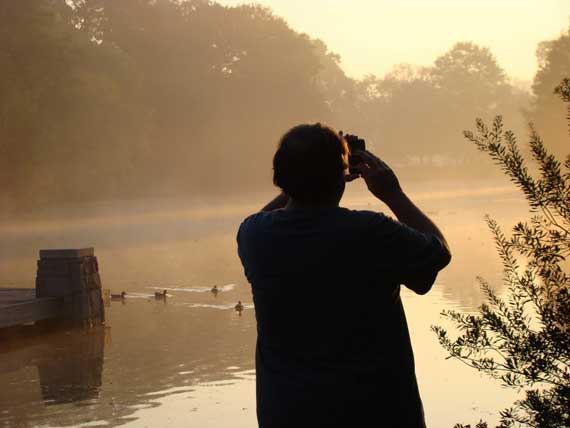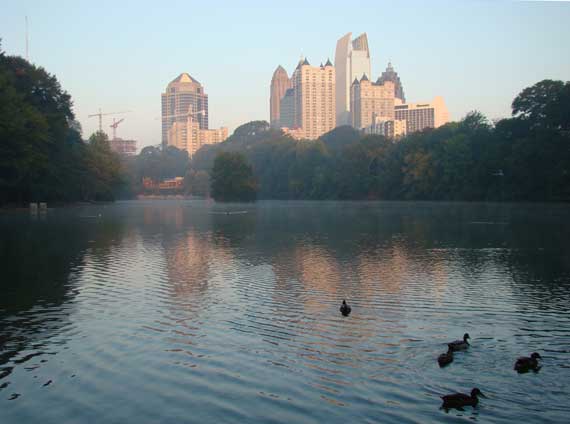iPhone photography
Sunday, 30 September 2007

Backlighting can be your friend!
Saturday, 29 September 2007

You never know what you’ll find in a shop window these days….
Seems like someone is promoting the idea that a small wine shop in the right neighborhood would be a fine, perhaps growing, concern.
Maybe it’ll be like the balloon-shop fad, which lasted several years most places, but persists in, it seems to me, much of rural America.
Friday, 28 September 2007

Most of the new construction in our neighborhood shows someone (perhaps mostly the planning commission?) has made a serious attempt at fitting in with the architectural style. Love the soffits.
Well, as long as I don’t have to paint/maintain them!
Thursday, 27 September 2007

Seems like our future, maybe the future of life “as we know it” on this planet, is wrapped up in water. Gotta have water.
Gotta have air, too, but it seems that we can survive long enough to reproduce when we live with polluted air. For example, consider smokers, who deliberately inhale highly polluted air (although other airborne contaminants are more dangerous than the typical modern US ciggy), and modern urban China. No lack of reproductive success with either of those populations.
Food, well, yup, that’s a necessity. But we get our food primarily from agribusiness. And agriculture is without a doubt dependent on water, so our food sources depend on water. too.
By water, I don’t mean simply potable water, or rainfall, or even groundwater. But the big, capital W water: that is, water from anywhere.
If I decided to go into the legal profession, I’d specialize in legal issues associated with water. It ties into human rights, civil rights, group vs individual rights, ownership, distribution control, the whole shebang.
I’m thinking, in fact, that the folks who are specialists in other resources (petroleum products, scarce metals and minerals) are already working to corner markets and build in legal loopholes to give Them advantages in the economics of water. I also figure that The Angler and his ilk have been getting laws changed to help those folks, and that we’ll only find that out sometime in the mist-free future….
At first glance, I was mystified today when I examined our water/sewer bill and discovered we pay over twice as much for sewage (based on how much water we consume, so the volumes are—assumed to be—the same) than for water. But then I figured, I suppose it costs more to make sure sewage doesn’t contaminate, tada!, water, than it does simply to deliver clean water to my house.
Next topic to ponder: how better to use graywater (more on this in the southwest than these parts: examples from Arizona and New Mexico), a practice promoted in a leaflet included with our water/sewer bill. Someone who goes to the trouble of toting their shower water out to plants was lauded. We use our dish water on outdoor plants, but the shower water goes down the drain (for now). As I understood it (maybe this is now incorrect: note to self, check on this), we couldn’t directly pipe our graywater into the yard, but we can carry it out there. Some people use graywater (sometimes greywater) for flushing, and I guess that may not be a violation.
Rather twisted logic there, no?
So, would the agribusiness water demand drop if we consumed significantly less grain (takes lots of water to grow and process) replacing it with non-starchy vegetables (as diet specialists recommend would improve our health)?—veggies sold only minimally processed?
Wednesday, 26 September 2007

(Borrowing from jcb) AFLAC auditions at Piedmont Park this morning….
I’m enjoying that the NYTimes has (finally) unlocked their editorial content (and much of their archives). Not that I agree with their various voices, but I think they have good, thoughtful people writing their regular opinion columns, and that makes reading them worthwhile.
David Brooks’s piece from yesterday presents data I had not seen before; I reserve my conclusions for a while, though. What is useful is which sub-demographic represents the group who ends up voting. I’m not sure that we won’t see that we get a load of new voters from a group that tips things in unanticipated ways. Anyway, too bad Brooks resorts to a cheap shot at John Edwards for his final line.
BTW, are Brooks’s “high school educated women in the Midwest” pretty much equivalent to Janet Elder’s Wal-Mart women….
Now that the GM strike is over (pending affirmation by the membership), thoughtfulness is mandatory in any reasonable analysis. I kept thinking as I read/heard coverage of the strike issues that what it all comes down to is that GM has to make vehicles that sell. The most commanding components for most buyers are something that has to do with function/aesthetic and price, probably in either order depending on the buyer, the vehicle, and the particular moment the query is made. So, non-striking GM people need to come up with designs that will sell, and lineworkers need to do their part to allow the price to fit the market. Lest I sound pro-management, those folks should have had a pile of fine anthropologists and economists on their staff for decades giving them feedback on the ways of the world (note that I didn’t add: that they remain too ignorant of). Since GM’s market is global, they can’t think just or even primarily US/North America…for any of it—not just labor, but also design and all the rest.
PS Please don’t confuse musings with rants. Or I hope that’s true!
Tuesday, 25 September 2007

Would you eat at a restaurant with this under one of the tables on its front patio?
Me, I’ll pass.
This restaurant was a Qdoba’s, which may explain everything.
Monday, 24 September 2007

I read about Negroponte’s program to get laptops in the hands of kids around the world, which I think is a terrific idea, and I got confused. In his package deal, sponsors pay for two laptops, one they get and one that’s sent “away.”
I’m confused about two things. One, the laptops cost something like $100, but the two-laptop deal is $399. I’m reasonably competent at addition, and there’s a real gap there. Presumably some funds are necessary for shipping and handling for the give-away laptop, but $200 seems rather excessive. Second, how many of these laptops are destined for kids here in this country? After all if they are for disadvantaged kids, we’ve got quite a few within our national boundaries, and they should not be overlooked.
Still, I’m tempted to participate. This deal kicks in 12 November.
How ’bout you?
Sunday, 23 September 2007

I saw Marcel Marceau perform live only once. No doubt about it, he was very special.
And that doesn’t even come close….
Saturday, 22 September 2007

David Margolick’s NYTImes review of Jeffrey Toobin’s new book on the Supreme Court makes a point that should be among those foremost in the mind of anyone critically reading history or watching a documentary: what sources does the piece rely on.
And this issue’s too often, well, ignored.
PS Love that Sandra Day O’Connor’s take on The Shrub is that he’s “arrogant, lawless, incompetent and extreme.” I second the motion.
Friday, 21 September 2007

Yeah, I know; this is not a horse. But it’s the closest I had….
While browsing tables of contents for issues of the International Journal of Historical Archaeology, I ran into this term: horselads.
The term harks back to the days of horse-farming in rural Britain, and to the social hierarchy on rural farms (those Brits!). Horselads were at the bottom, while still valued for their knowledge of work horses, although they were assigned other menial field labor. The horselads received room and board as part of their compensation, in part because the farms were relatively isolated, or at least by keeping horselads resident on the farms their labor was assured.
Horselads could be recognized by their by their distinctive dress at the hiring fairs where they looked for their next position—they moved each year—while striving to move up the hierarchy.
Because of their low status, annually fluid employment situation, and the way written history (even modern history) is generated, little directly from horselads has made it into records. Giles and Giles opted to examine the graffiti in barns where horselads lived and worked to obtain insights into their lives.
Conclusions: horselads wrote about sex and the ladies, they glamorized themselves, they recorded song lyrics, they wrote about hardships (extreme weather, boredom), and they drew pictures (mostly line drawings) on the same subjects (especially the first).
I wondered if the horselads are in the direct social ancestry of North America’s western cowboys, but these British researchers do not address this point.